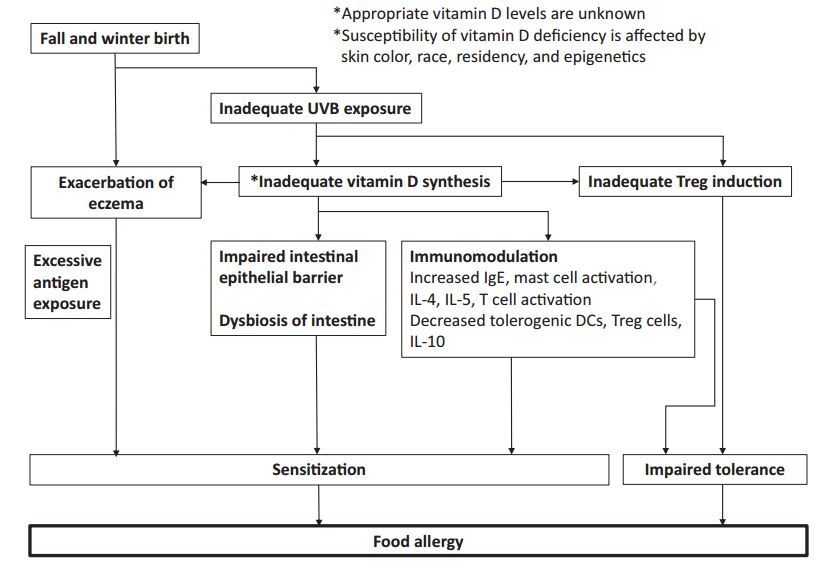Food allergy is linked to season of birth, sun exposure, and vitamin D deficiency
.Allergology Internationa DOI: https://doi.org/10.1016/j.alit.2018.12.003
Teruaki Matsui Teruaki Matsui Teruaki Matsui, Kajiyo Tanaka, Hirotaka Yamashita, Ken-ichi Saneyasu, Hiroyuki Tanaka, Yoshihiro Takasato, Shiro Sugiura, Naoki Inagaki, Komei Ito
📄 Download the PDF from VitaminDWiki
Hypothesis

Article Outline
Introduction
Risk factors associated with allergic sensitization and FA
The potential link between vitamin D deficiency and FA
Season of birth and immune cells
Mast cells
Regulatory T cells
B cells
Dendritic cells
Intestinal mucosal immunity
Animal studies of vitamin D deficiency and allergies
Vitamin D deficiency and sensitization in clinical situations
Vitamin D deficiency and FA in clinical cases
Vitamin D supplementation and FA
Possible factors explaining the discrepancy in the relationship between vitamin D deficiency and FA
The definition of vitamin D deficiency
Excessive vitamin D
Race
Epigenetics
Season of birth and AD
Vitamin D is dispensable for UVB-induced immunosuppression
Discussion and conclusion
The season of birth and ultraviolet B exposure have been related to the occurrence of food allergy. The levels of vitamin D produced from skin by ultraviolet B exposure might reflect this relationship. Vitamin D is known to induce antimicrobial peptides, protect intestinal flora, enhance the gut epithelial barrier, suppress mast cell activation and IgE synthesis from B cells, and increase the number of tolerogenic dendritic cells and IL-10-producing regulatory T cells. Vitamin D deficiency has been shown to exacerbate sensitization and allergic symptoms in a murine model of food allergy. However, in clinical situations, contradictory observations have been reported regarding the relationship between food allergy and vitamin D deficiency/supplementation. In this review, we have explored the links between food allergy and vitamin D levels.
One explanation for the discrepant findings is confounding factors such as race, age, residency, skin color, and epigenetic changes that contribute to vitamin D levels.
In addition, the season of birth influences the development of atopic dermatitis, which could lead to food sensitization.
Finally, ultraviolet radiation could lead to regulatory T cell expansion and immunosuppression, irrespective of vitamin D status.
Based on our current understanding, we believe that correction of vitamin D deficiency by supplementatio n, appropriate skin care, and sufficient ultraviolet radiation exposure could alter the prognosis of food allergy. To identify potential treatment strategies for food allergy, it is essential to gain a better understanding of the appropriate levels of vitamin D and ultraviolet radiation exposure.
